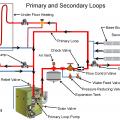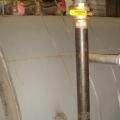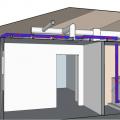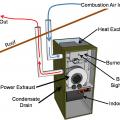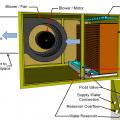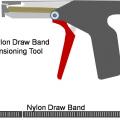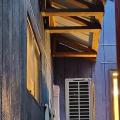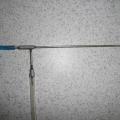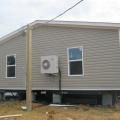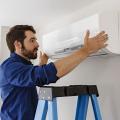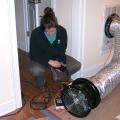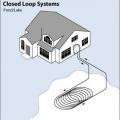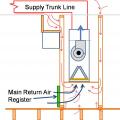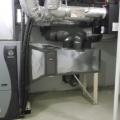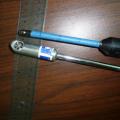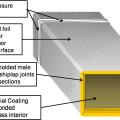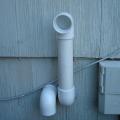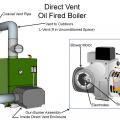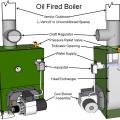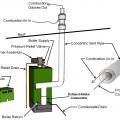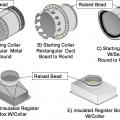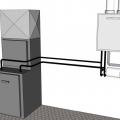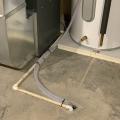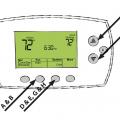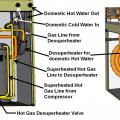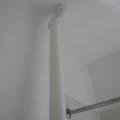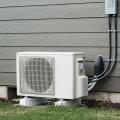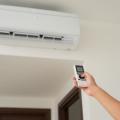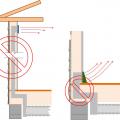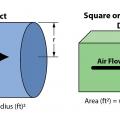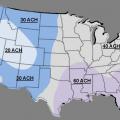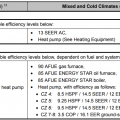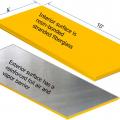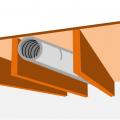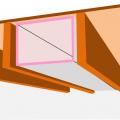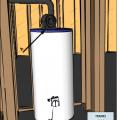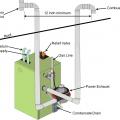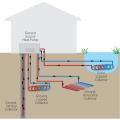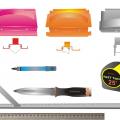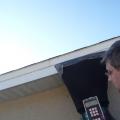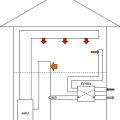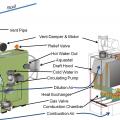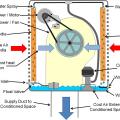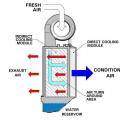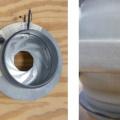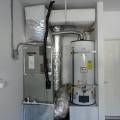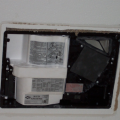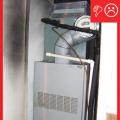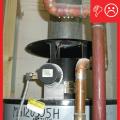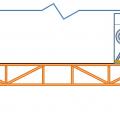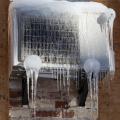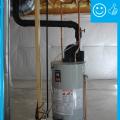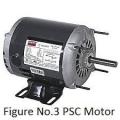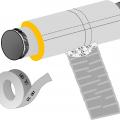Showing results 1 - 100 of 198
A boiler system can be set up with primary and secondary loops to supply hot water for multiple uses
A Category I induced draft boiler uses an induced draft fan to pull air through the combustion chamber and to the flue
A central fan-integrated supply system uses a fresh air intake ducted to the home's central furnace or air handler unit to supply fresh air throughout the home
A cool room should have low enough heat gains to be easily cooled by a small single-zone cooling system such as a mini-split or a window air-conditioner as shown here
A direct-vent sealed-combustion fireplace takes its combustion air directly from outside through a dedicated air inlet and vents combustion products directly outside
A direct-vent sealed-combustion furnace has dedicated pipes for combustion air and exhaust
A foaming cleaner is used to clean the coils inside this ductless indoor unit; a mini-split bib surrounds the unit to contain overspray and drips
A foaming sprayer and mini-split bib are required to properly clean this ductless wall-mounted indoor unit
A ground source heat pump with an open-loop piping system using vertical injection and recharge
A ground-source heat pump has the same components as a standard air-to-air heat pump except that the liquid-to-refrigerant heat exchanger coil is located inside rather than outside
A ground-source heat pump with a closed-loop horizontal “Slinky™ “piping arrangement
A modern single-inlet direct evaporative cooler draws outside air through an 8- to 12-inch media filter
A nylon draw band and tensioning tool are used to secure the inner coil of the pre-insulated flexible duct
A nylon draw band and tensioning tool are used to secure the inner liner of the pre-insulated flexible duct
A permanent awning prevents snow and overflowing ice dams from causing damage to HVAC equipment below.
A pitot tube can be used to measure velocity pressure in a duct; at least twelve measurements are taken across the duct and velocity pressure is converted to velocity to calculate airflow
A powered flow hood is used to measure outside air flowing into the inlet terminal of a whole-house ventilation system
A properly sized cold climate heat pump can meet 100% of a home’s heating load in nearly any location in the United States
A properly sized high-efficiency heat pump is located in conditioned space in a closet inside the home.
A single ductless heat pump heats and cools the country’s first DOE Zero Energy Ready certified manufactured home.
A small, single-zone cooling system such as this ductless mini-split heat pump can be a very effective way to provide emergency cooling with a low power draw on a backup power system.
After securing the inner coil, cover the draw band and the seam with a generous amount of mastic
Air handler platforms used as return air plenums can draw air from vented attics and crawlspaces through other connected framing cavities
An energy recovery ventilator draws in fresh outside air that is filtered and circulated by the central air handler, while stale air from central returns is routed through the ERV to exchange heat before being exhausted outside.
Anemometers, including the vane style (lower) and hotwire style (upper) are used to measure air velocity to calculate airflow
Because flue temperatures are cool, intake and exhaust ducts on a Category 4 direct-vent sealed-combustion condensing furnace can be made of PVC
By plotting the heating capacities at -4°F and 5°F and drawing a line between them, the capacity at 0°F can be estimated
Calibrations are specific to each airflow station model and size and are needed to convert measured station pressure to airflow
Category III oil-fired, sealed-combustion boiler configured as a direct-vented appliance that draws its combustion air from outside
Category III oil-fired, sealed-combustion boiler with the burner assembly cover removed
Collars that are specifically made for flexible duct have a raised bead to prevent the duct from slipping off
Concept behind an evaporative cooler – warm air is cooled as the air passes through a wet medium and gives up some of its heat to evaporate the water
Condensate from this heat pump water heater is routed to a nearby floor drain, shared with the condensate lines from a condensing gas furnace and an air conditioning coil
Cool air flow is produced when the cooling cycle is energized (set thermostat to “cool”)
Cooling air temperatures that can be achieved by a direct evaporative cooler at various outdoor conditions
Cut fiber board with a red V-groove tool and a gray shiplap tool to create mitered corners and a shiplapped edge for duct sections
Direct-heat risers are bare pipes that heat the space they're in without connected radiators
Ductless indoor units like this one are controlled individually by handheld remote controllers.
Equations for calculating duct cross-sectional area for round and rectangular ducts; area is used with measured velocity to calculate airflow
Evaporative Cooler Sizing in ACH based on wet-bulb temperatures at 1% summer design conditions
Example expanded performance table from a 1.5-ton air conditioner
Flowhood is sealed against the irregular surface using pipe insulation along the edge of the hood to complete an airtight seal around the terminal.
For fireplaces that are not mechanically drafted or direct-vented to outdoors, total net rated exhaust flow of the two largest exhaust fans is .15 CFM per 100 sq. ft. of occupiable space when at full capacity
Furnaces, boilers, and water heaters located within the home’s pressure boundary are mechanically drafted or direct-vented
Hand tools for cutting fiber board sheets include a knife, straight edge, and color-coded edge-cutting tools
Hood capture area that extends out from under the soffit surface must be temporarily sealed.
If HVAC duct must be installed in an exterior wall, separate it from the exterior with at least R-6 of continuous rigid insulation
If integrating an ERV/HRV with the heating/cooling duct system, add dedicated ducts for either the supply or return side to prevent short-circuiting of air distribution
In a Category I gas-fired, natural-draft boiler, the natural draft of the heated flue pulls combustion air through the draft hood into the combustion chamber
In a typical old style multi-inlet evaporative cooler, the blower fan draws outside air in through multiple media filters and blows it into the home
In heating mode, split system heat pumps absorb heat from the outside air and “pump” that heat to the indoor air handler unit, which releases it to the inside air.
Indoor measurement of a whole house mechanical ventilation system with a pressure balancing flowhood provides a sheltered location for measuring airflow
Install a master vent tree to release air and prevent air binding which blocks steam heat from reaching its destination
Install supply registers in floors or ceilings to avoid routing ducts through exterior walls
Iris damper style airflow stations come in different sizes and can be adjusted to control airflow
It is not recommended to install HVAC systems in enclosed attached garages. However, when HVAC systems are installed in enclosed garages, they must comply with ASHRAE 62.2 duct leakage thresholds.
Lower-cost local ERVs are usually installed in a ceiling to supply outdoor air to and exhaust air from the room in which they are located
Metal drain pans under HVAC equipment can corrode over time, especially in humid environments
National Fuel Gas Code (NFPA 2012) identifies four categories for combustion furnaces and water heaters based on combustion type (sealed or unsealed) and vent pipe temperature
National HVAC Design Report - Cooling Equipment Selection (Version 3 / 3.1 (Rev. 09))
Open floor trusses used as return air plenums can draw air from any place connected to that floor
Proper refrigerant charging is critical to maximizing performance for compression cooling systems
Pull the insulation and outer liner of the flex duct over the collar to come in full contact with the liner and insulation of the trunk line or fitting and tape in place
